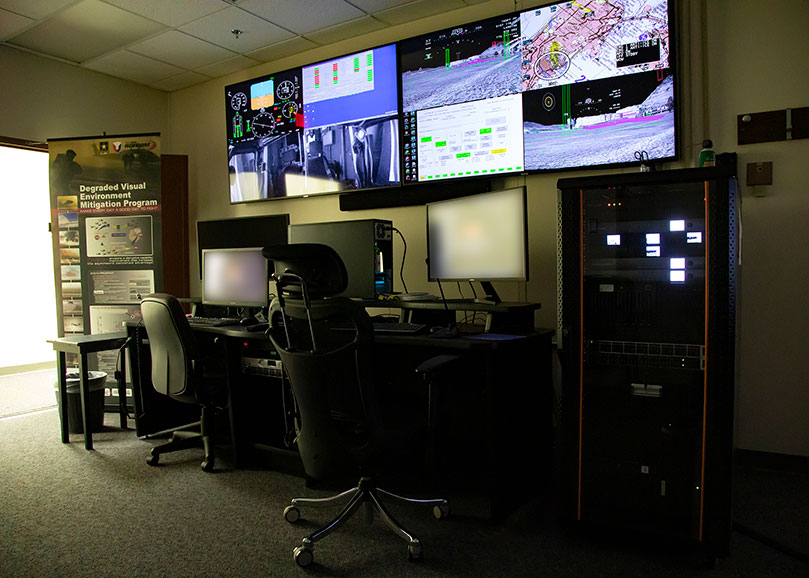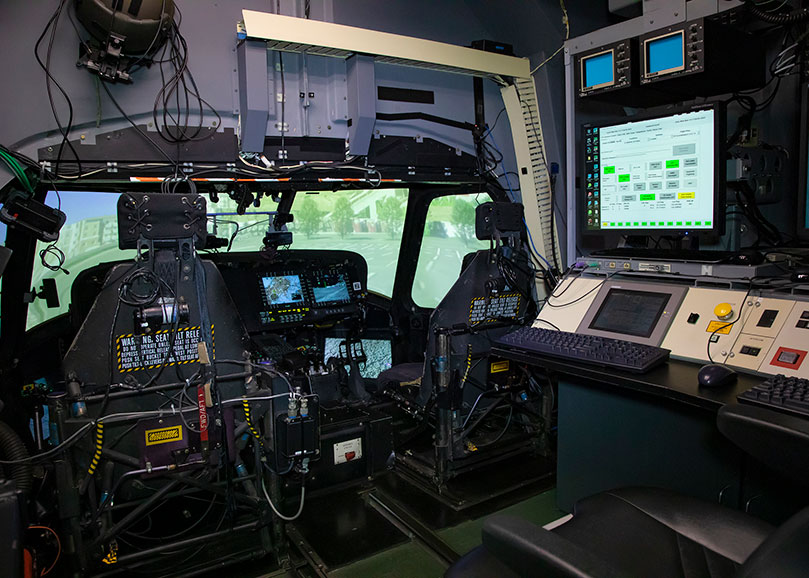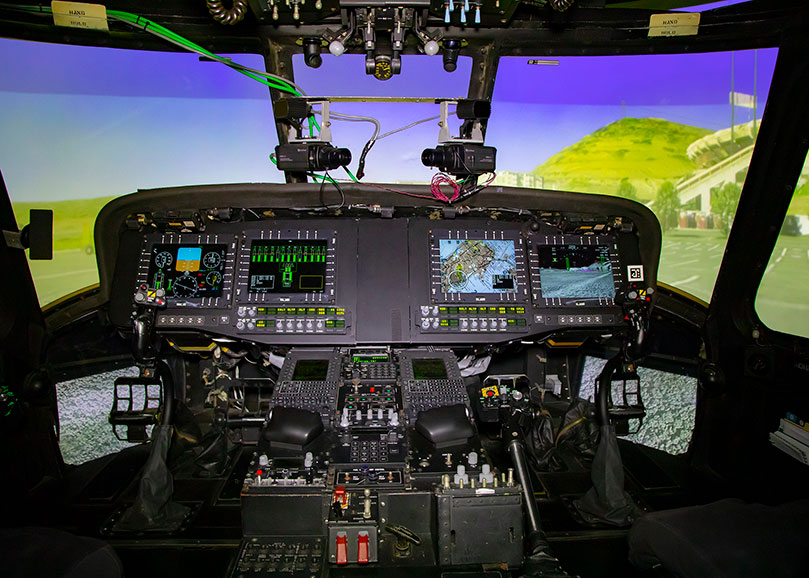Flight Systems Branch
Flight Systems Branch (FSB) provides aviation subject matter expertise and manages the Laboratory's aviation research, development, test, and evaluation flight support assets. These assets include "FORGE" the world's only dedicated aeromedical research Black Hawk helicopter (HH-60M) and an aeromedical/environmental Black Hawk flight simulator (NUH-60FS). The FSB is committed to providing world-class aeromedical support to the Laboratory's research divisions and to an ever growing number of external organizations, including Department of Defense Laboratories, industry, non-government agencies, and academia.
Capabilities Include:

USAARL's JUH-60A was retired in April of 2020 and was replaced with a fully equipped HH-60M, "FORGE." "FORGE" is instrumented with in-flight measurement systems to monitor and record aviator physiological and cognitive status, flight performance, and aircraft performance in real-time. USAARL Research Pilots are qualified in dynamic hoist operations and work closely with outside organizations on developing best practices. Flight Systems Branch is at the forefront of obtaining the newest technology and equipment for test and evaluation purposes. "FORGE" is included on all test airworthiness release test plans, allowing for the ability fly and gather data with newly developed equipment not yet released for flight. Our pilots and staff perform dry fit and in-flight testing to collect data and certify new equipment in efforts to improve future medical evacuation (MEDEVAC) tactics as well as aircraft, and patient safety standards, while supporting the air and ground warfighters. Calibrations and training include USAARL's own En Route Care Group (ECG) for Airworthiness Certification and Evaluations (ACE) and School of Army Aviation Medicine (SAAM).
USAARL's NUH-60FS is the world's only full-motion, full-visual aeromedical research flight simulator. In April 2020, the system received a visual and performance upgrade through the installation of an RSI CV10R dome and eight Barco FS40 projectors. The simulator features infrared lighting and cameras, specially adapted sound and noise replication, a night vision goggle head-up display, advanced flight symbology, and an emulated aircraft sensor. The simulator also configures to the Alpha, Lima, or Mike model Black Hawk cockpit instrumentation. The NUH-60FS has the unique ability to capture pilot performance and physiological data, such as core body temperature, electroencephalogram, electrocardiogram, respiratory rate, galvanic skin response, and eye-tracker data. During studies conducted in the simulator, a USAARL Research Pilot monitors data collection on-board the simulator, while medical and research technicians observe data collection from a fully instrumented and monitored external control station.

USAARL's UH-60M Black Hawk helicopter Cockpit and Academics Procedural Tool - Enhanced, Visual Capable System (CAPT-E VCS) trainer allows for the evaluation of workload in a digital glass cockpit platform. The device can facilitate the evaluation of aviator performance in reduced oxygen environments simulating high-altitude flight. The low-cost, high-fidelity simulator is the first of its kind fielded in the Army. CAPT-E VCS is well complimented, with 12' projection wrap around dome and state-of-the-art X-IG® runtime format image generation software which immerses aviators in each training scenario while researches observe aircrew performance and biometric data. This simulator supports the future vertical lift Army modernization priority and enhances the Army's capability to conduct multi-domain operations in dense urban terrain through improved aviator performance. The CAPT-E VCS provides multiple future research opportunities throughout the aviation enterprise and business partnerships.

In support of the Army's vested interest in the future of simulated training environments, USAARL is equipped to test and collect data on the efficacy of new modeling and simulation equipment. FSB owns the only generic glass cockpit (GCC) allowing for the development and display of customized symbology sets across multiple rotary wing platforms. This device features a full length liquid crystal display (LCD) display accompanied by an additional panel for the middle console. Our engineers are able to program multiple displays with the eventual goal to incorporate this system into our full motion flight simulator. In addition to the GCC, FSB is fully vested in the Army's Aviator Training Next Program, which incorporates virtual reality into the Army's rotary-wing aviation training curriculum. Our simulation and VR laboratory allow the ability to test, evaluate, and report how effective virtual reality and simulation are in replacing traditional methods of training aviators. These VR trainers immerse the pilot into a realistic training environment environment and are being used to determine whether pilots are able to learn flight tasks quicker and retain them longer in comparison to traditional flight training. Input from FSB Research Pilots combined with the physiological data analysis from our research scientists merge the sciences of aviation and medicine in order to protect the future Warfighter.
FSB is led by a supervisory aeromedical research instructor pilot and multiple aeromedical evacuation instructor pilots, and is supported by a team of flight surgeons, flight medics, aerospace psychologists, research technicians, and contract maintenance support personnel. FSB's highly-trained pilots provide expertise in aerospace physiology, human factors, and human system integration, and consult on a variety of topics, such as cockpit design, helmet mounted displays, and hypoxia prevention/oxygen delivery solutions for rotary wing. The FSB team assists the Laboratory's researchers develop aeromedical research flight protocols and identify effective measures of pilot performance. The team also provides subject matter expertise regarding aeronautical and operational considerations pertaining to data collection and aviation missions.
To reserve USAARL's HH60M or NUH-60FS or for additional information, contact us.
back to top
Last Modified Date: 2024-11-25